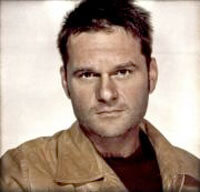Born in 1969 in Switzerland, Steeve Iuncker lives and works in Geneva. He studied at the Photography School in Vevey and is Agence VU' member since 2000.
“Press photographer (he works part-time for a daily newspaper), Steeve Iunker tirelessly questions the role(s) of photography and of the image in the fields of information and documentary today in a radical and political way…[his work] aims to get close to the taboos relating to the body, to death and to the standard social conception of big issues that affect human thought. Either he stays with an Aids patient in the terminal phase, he represents the professional life of an old prostitute, he confronts himself with the crisis in Gaza, he stores images of celebrities adorned with diamonds at Cannes Festival, discovers the backstage area of a fashion show, follows the police while investigating on crimes, or reveals the astounding world of plastic surgery, Steeve Iunker doesn’t chase icons. He shows. In a realistic, free and salutary way. Even if it might seem provocative or shocking. He only wants us to agree to see. To be responsible and clear-sighted.”
Christian Caujolle.
He has recently finished the first phase of a project dealing with the subject of death. He wishes to expose to Geneva the realities that its police department, University Institute of Legal Medicine and the Murith Funeral Services must face regularly. The second ongoing phase of the project consists of photographing the places and traces behind individual deaths in order to reveal an often unknown reality that is tossed into the realm of fiction by Hollywood movies.
Source: Agence VU
